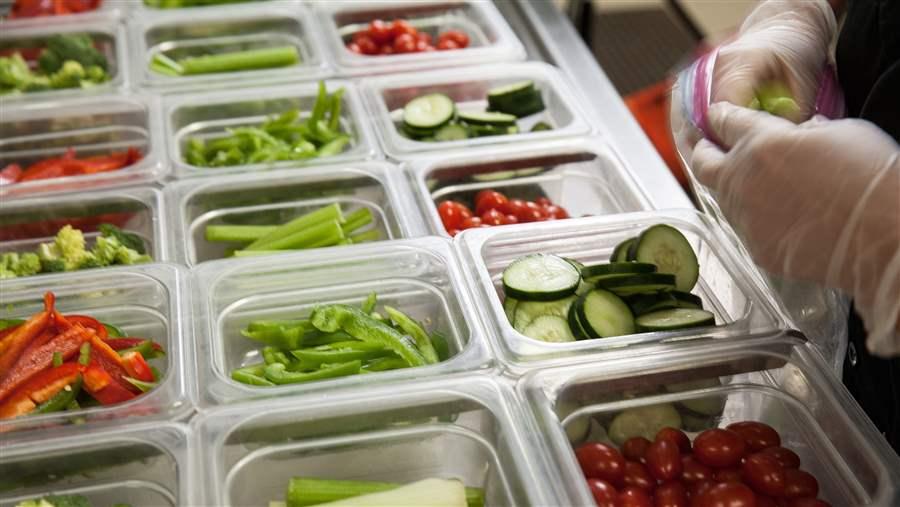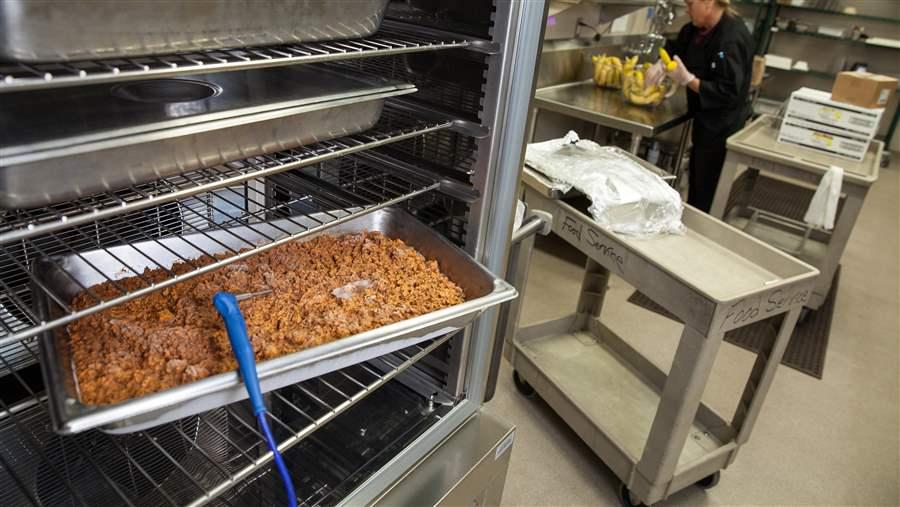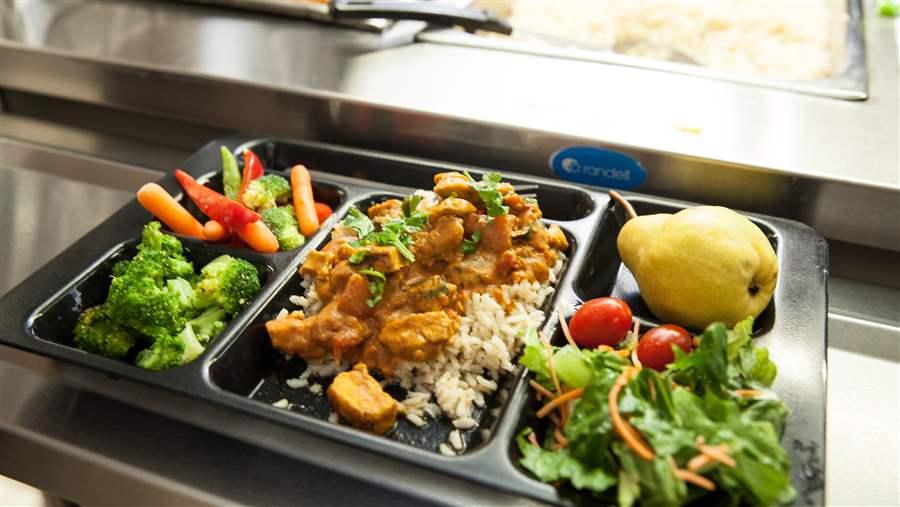Kids Give Two Thumbs Up to School Lunch Upgrades
 The Pew Charitable Trusts
The Pew Charitable TrustsStrategically locating salad bars within school cafeterias can significantly increase consumption of fruit and vegetables. These colorful displays encourage kids to select fresh vegetables.
Michelle Kloser is the director of school nutrition for the Menomonie Area School District in Menomonie, Wisconsin. The Kids’ Safe and Healthful Foods Project talked with her about nutrition education and what she’s doing to improve school meals.
Q: What steps have you taken in the past few years to make your menus more nutritious?
A: One of the first changes I made when I started in the district was to include a “garden bar” with the school lunch at all grade levels. Our focus is on fresh fruits and vegetables. Thanks to our teaching staff and AmeriCorps volunteers, we have increased the number of schools with gardens, and all of the produce we grow is used in the lunch program.
Q: Has school food preparation changed to produce healthier meals?
A: Yes, we are doing a lot more cooking from scratch. My staff has been very supportive and eager to try new recipes. We are also doing more on-site cooking in elementary schools, which typically had been only satellite kitchens. For example, we do more roasting of vegetables at the individual schools. Earlier this year, we had roasted fingerling potatoes—grown by a local farmer—with garlic and rosemary, and when I walked into one of our elementary schools, you could smell the aroma in the hallway. On-site cooking really appeals to the senses and encourages the students to look forward to eating their warm roasted vegetables and freshly baked entrees.
Q: You’ve recently upgraded your high school kitchen. How has that made a difference in meal preparation?
A: We were so fortunate that our kitchen upgrades were included in a remodel at the high school. Our school board and community were supportive of the project, and we couldn’t have done it without their backing. In particular, we are very excited about our new blast chiller, which freezes cooked foods in under 90 minutes, safely preserving them for storage and later consumption while maintaining more of the nutrients and flavors. The chiller also allows us to purchase more fresh food in bulk. We’re already freezing locally sourced ground beef, and we have plans to cook and freeze local vegetables when they are in season, helping us serve popular items year-round.
 The Pew Charitable Trusts
The Pew Charitable TrustsEighty-nine percent of school districts in Wisconsin need at least one piece of kitchen equipment to better serve school meals. This blast chiller will allow Menomonie High School to serve more locally grown and sourced products year-round.
Q: How have these changes affected students?
A: We receive many positive comments from teachers, parents, and students regarding the quality of our menu, and we’ve noticed an increase in participation since we implemented these changes. At our high school, for example, we’ve seen approximately 150 more students per day buying meals.
Q: Your lunch menus feature a lot of variety and many ethnic dishes. What’s one of the kids’ favorites?
A: As part of our farm-to-school initiative, we have a program called “Adventurous Eaters” that invites elementary students to sample and give us feedback on new menu options. I expanded the program this year to include entrees, and chicken tikka masala was one of the dishes that our Adventurous Eaters approved. Most kids gave it a thumbs-up, and many came back for seconds and thirds during the tasting.
 The Pew Charitable Trusts
The Pew Charitable TrustsMenomonie schools have worked to expand students’ taste for healthy foods by serving nontraditional lunches, such as chicken tikka masala, that meet updated nutrition standards. And the kids are eating and enjoying them.











